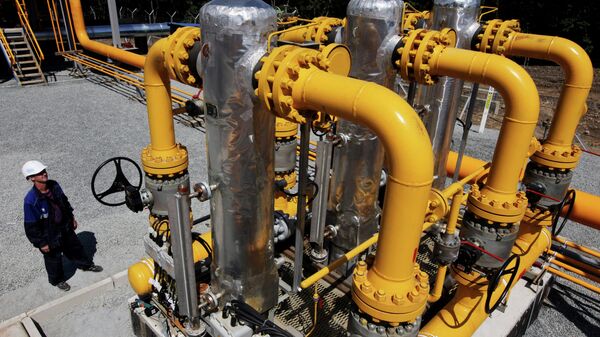This new technology consists of rolling coiled stock for corrosion-resistant oilfield pipes with improved operational characteristics, the NUST MISiS press service said in a statement. The developers intend to apply for an international patent in 2018, and in 2019 they will be able to guarantee a two-fold increase in the service life of pipelines manufactured using this new technology.
A number of steel varieties have been developed, and Severstal has already proceeded with experimental smelting and produced a test batch of the new material. Samples of this new alloy, called Severkor, have already passed corrosion tests. In addition, a pipeline made of this new steel for oilfields in western Siberia is expected to undergo field trials in the near future.
“Our technology of making rolled steel for longitudinally welded oil pipes provides enhanced resistance to corrosion and cold,” one of the project’s members, Research Fellow at NUST MISiS, Alexander Komissarov, said, adding that the main goal was to develop new alloying formulas (adding new elements to the material to improve its characteristics) for achieving the required composition when making rolled steel and sheet metal.
In order to reach the required characteristics, researchers had to formulate ways of introducing new elements, including chromium, copper and nickel, into molten steel, a process called microalloying. By introducing these metals into molten steel, researchers could control the composition of corrosive non-metal ingredients, thereby decreasing their negative effect on steel properties.
“To fulfill the high requirements for steel purity and structural uniformity, as well as to introduce the unique alloying concept, we had to come up with complex solutions and resolve contradicting technology parameters,” Senior Manager at Severstal’s Technology Development and Quality Division, Yevgeny Fedotov, said, adding that laboratory tests had proved the new solution to be effective.





